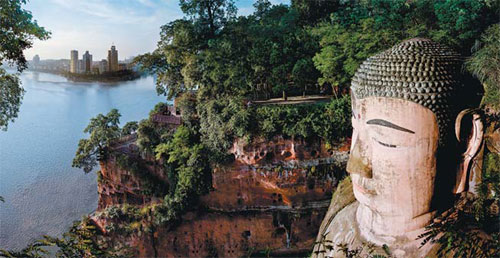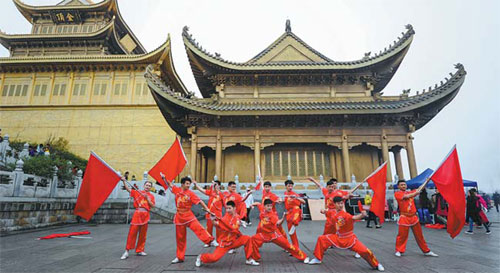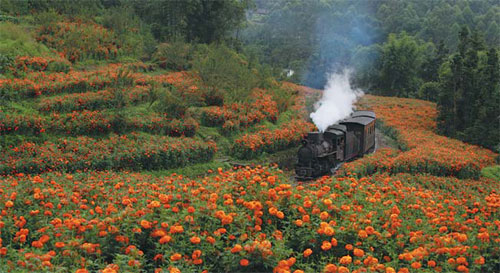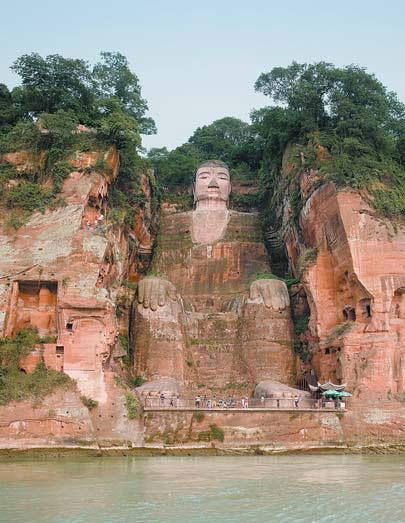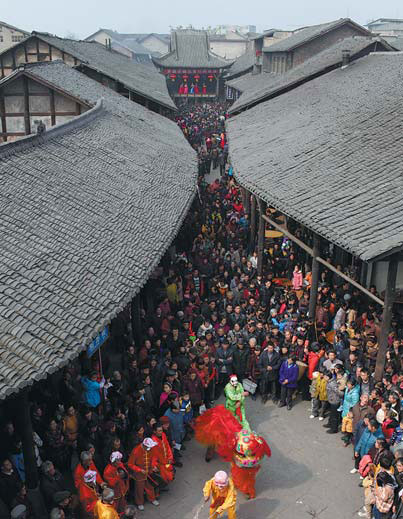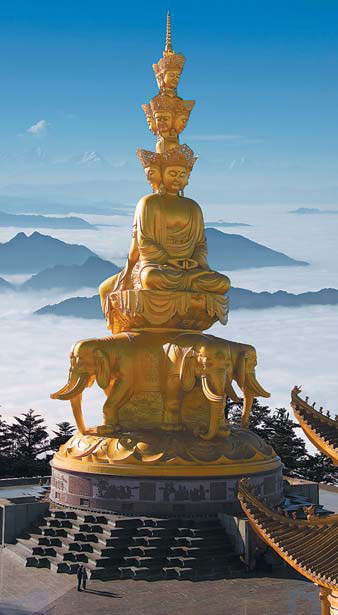Sichuan's sacred land hosts tourism expo
Conference to cast spotlight on Leshan's natural and cultural wonders, Zhang Zhao reports.
As the host city of the second Sichuan International Travel Expo, Leshan will welcome businesspeople from more than 30 countries and regions globally from Thursday to Saturday in a showcase of the city's natural and cultural charms.
Leshan, in Sichuan province, covers an area of 12,700 square kilometers, with a population of 3.56 million people. It is also known as the "kingdom of the begonia", as the flower abounds. It has been listed as a national excellent tourist destination and a Chinese historical and cultural city.
It is the hometown of Guo Moruo (1892-1978), one of the greatest writers and poets in China's modern history; the cradle of the Emei School, one of China's three major schools of martial arts; and an origin of the nationally famous Sichuan cuisine.
Shao Boyou, a scholar during the Song Dynasty (960-1279), wrote in an essay that Sichuan has the most beautiful landscape in China and that the best part of Sichuan is Leshan.
The downtown area of Leshan combines urban facilities with nature and culture. Nearly 55 percent of the city is covered in forest and the city center has 9.4 sq km of green coverage.
Leshan has been a recognized sacred place for Buddhism since the religion was introduced via the Silk Road of South China more than 2,000 years ago. Clusters of temples have been built in Emei Mountain, west of Leshan, making it one of the four sacred Buddhist mountains in China.
Emei Mountain is traditionally regarded as the place of enlightenment of the bodhisattva Samantabhadra.
Locals began building a giant Buddha statue in AD 713 at the confluence of three rivers. The 71-meter tall Leshan Giant Buddha, facing the Emei Mountain, is the world's largest sitting Buddha statue.
The Emei Mountain Scenic Area, including Leshan Giant Buddha Scenic Area, was listed as a UNESCO World Heritage Site in 1996.
Around the city there are also the Heizhugou valley, known as the Chinese Bermuda area; the Jinkou Grand Canyon; and the bamboo forests in Muchuan county.
In Qianwei county in southern Leshan, steam trains were used to carry coal from the Jiayang coal mine half a century ago, and today serve as a tourist attraction. Running at only 20 km per hour, as they did before, the trains travel through four sightseeing areas with eight stops. The full return trip takes two and a half hours.
Contact the writer at zhangzhao@chinadaily.com.cn

|
An aerial view of Leshan, Sichuan province. It was named as a national excellent tourist destination and a Chinese historical and cultural city. photos provided to china daily |
|
Emei Mountain, located west of Leshan, is one of four sacred Buddhist mountains in China. |
|
The Leshan Giant Buddha, facing Emei Mountain, is the world's largest sitting Buddha statue. |
|
Emei School, one of three major schools for martial arts in China, has its origins in Emei Mountain. |
|
A steam train in Qianwei county is a popular tourist attraction. |
|
The 71-meter-tall Leshan Giant Buddha, built in AD 803 during the Tang Dynasty (AD 618-907), secured a spot on the UNESCO World Heritage List in 1996. |
|
Tourists and residents surround a lion dance procession in the busy Luocheng ancient town in Leshan. |
|
The 48-meter-high golden statue of Puxian on Emei Mountain. |
(China Daily 09/24/2015 page7)




